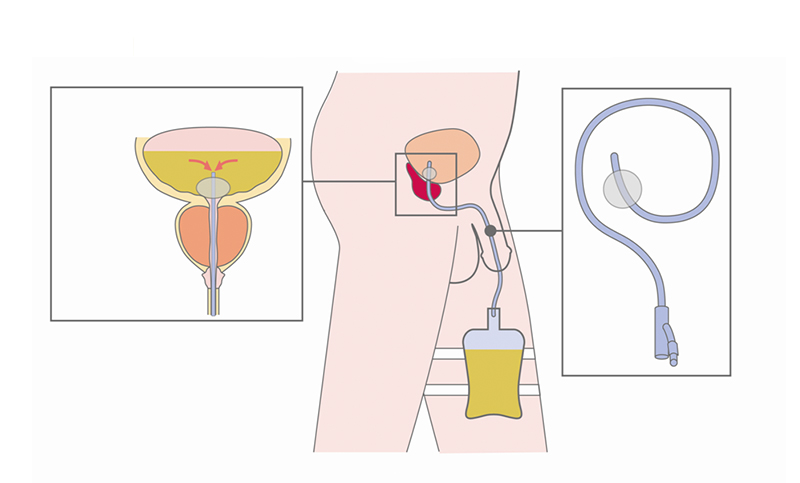Urinary Catheters: What They Are, Different Types and Why They Are Used
Urinary Catheters: What They Are, Different Types and Why They Are Used

Urinary catheters are used for a number of reasons, such as after surgery or if you have issues with urination. Here’s what you can expect.
A catheter is a tube that is placed into a passage in the body to assist with the transport of fluids. The most common kind of these is a urinary catheter, which is a tube that has been inserted into the bladder to drain urine. These may be either temporary or permanent and are necessary when somebody can’t empty their bladder in the normal fashion. This may be the result of surgery or because of an underlying condition or age.
Not being able to drain the bladder properly can lead to complications such as bladder stones, or a build-up of pressure in the kidneys, which can be very serious if not treated.
Why Are Urinary Catheters Used?
You’ve probably heard about catheters being used following surgery, as this is the most common instance they are used. Temporary catheterisation is often required after major surgery because patients are usually unable to make their way to the bathroom or, depending on the surgery, the mechanisms required to produce and drain urine may be affected.
A urinary catheter is almost always temporarily placed in the bladder following operations on the bladder, prostate, urethra and kidneys.
Some conditions may require a urinary catheter to be put in place permanently due to long-lasting damage to the nerves in the bladder, such as spina bifida or a spinal cord injury. Some procedures, such as radical cystectomy (removal of the entire bladder) will require the bladder to be ‘reconstructed’ – this is called a urinary diversion.
A doctor may also recommend a urinary catheter when you can’t control your urine, have urinary incontinence, or issues with urinary retention. This may happen in some older patients.

The Different Types of Urinary Catheter
Different types of urinary catheter will be suitable in certain circumstances:
Intermittent catheters (also known as short-term catheters)
These are the most common catheter you will see used. As the name suggests, they are temporary, used either after surgery until the patient regains the ability to drain urine themselves, or in a home-setting, where patients require assistance urinating.
In the case of the latter, patients or their caregivers are shown how to insert the tube by their healthcare provider. This is usually done via the urethra (or in some cases through a hole in the lower abdomen). If inserted via the urethra, the catheter is lubricated to help avoid discomfort.
Once all the urine has passed (either into the toilet or a special bag), the tube is removed. A new one is used each time.
Indwelling catheters (either urethral or suprapubic catheters)
An indwelling catheter is similar to an intermittent catheter, however they are left in place, either for short or long periods of time. The catheter is held in place inside the bladder by a water-filled balloon. This is deflated when the catheter needs to be removed. If the catheter is inserted via the urethra it is known as a urethral catheter. If it is inserted via a hole in the abdomen, it is known as a suprapubic catheter.
External catheters (also known as condom catheters)
External catheters are not inserted into the body, instead, urine is transported via a condom-like device that covers the tip of the penis. A tube then drains urine from the device to a bag. This is more comfortable than using an indwelling catheter, and the risk of infection is lower. They are suitable for men with problems with memory issues, such as dementia, or other mental disabilities.
What Are Some of the Risks or Potential Complications Involved With Wearing A Catheter?
There are a few risks and complications associated with wearing a urinary catheter. These are:
• Urinary tract infection (UTI)
• Bladder stones
• Blood in the urine (haematuria)
• Damage to the urethra
• Damage to the kidneys
If you have any questions regarding urinary issues or problems with your bladder, urinary catheters, or urinary diversion, or would like to book an appointment, please don’t hesitate to give us a call.

Understanding Kidney Stones: Causes, Symptoms, and Treatment Options
While most kidney stones will pass on their own accord, larger stones may require surgery. Here’s an overview of kidney…

Understanding Urinary Diversion: Three Types and Their Applications
There are three different types of urinary diversion, each applicable for different situations. Let’s take a closer look at all…






